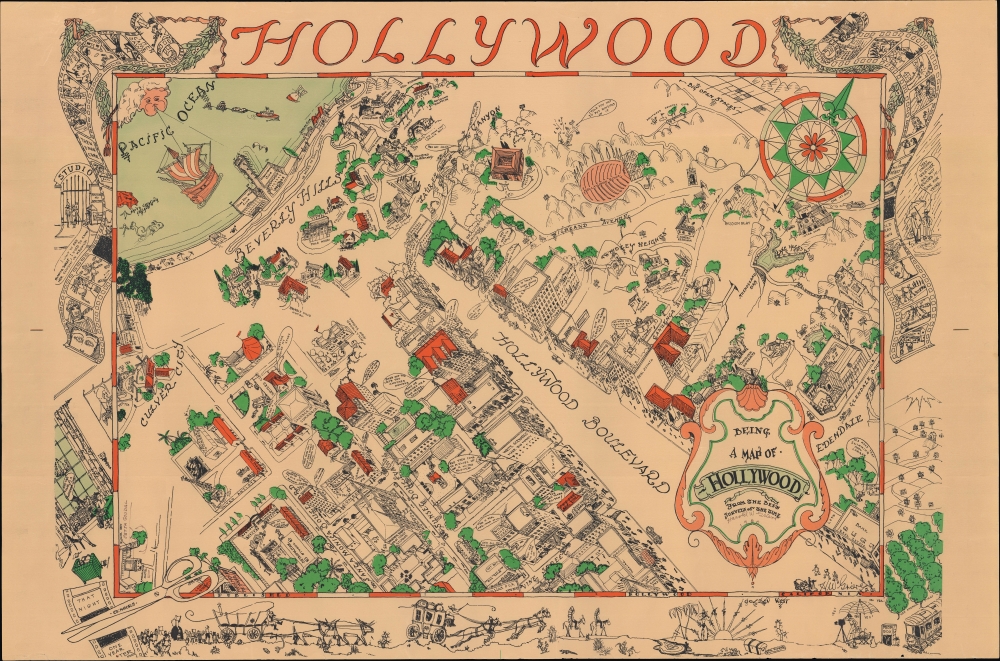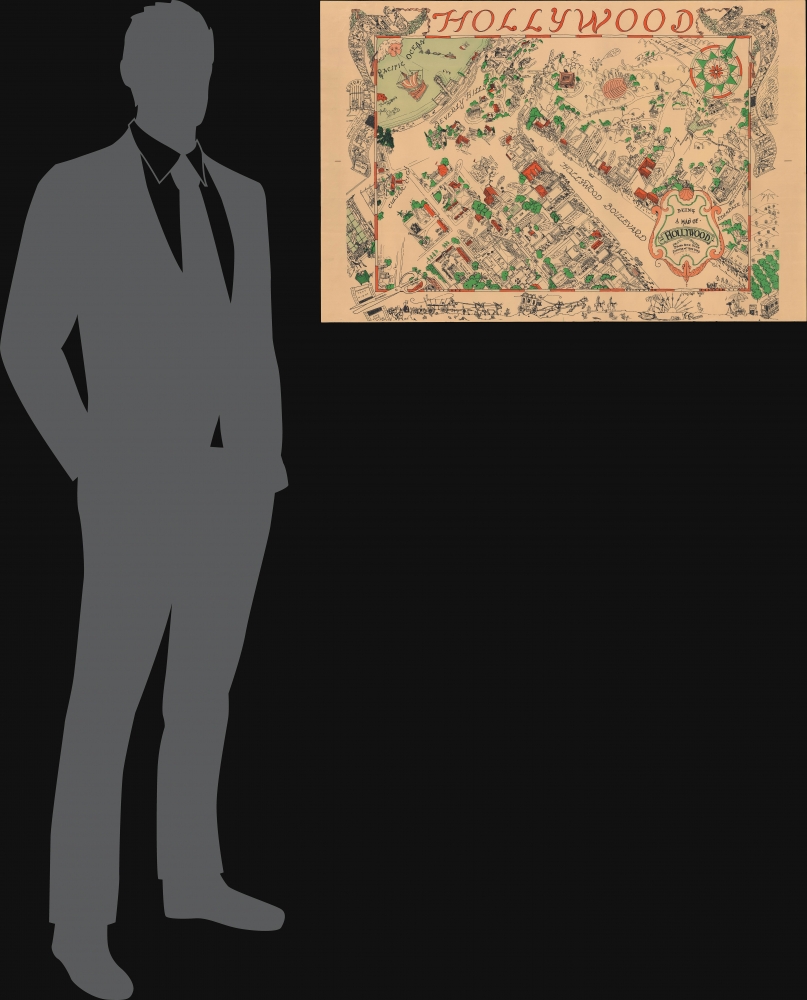This item has been sold, but you can get on the Waitlist to be notified if another example becomes available.
1926 (1970) Harold Grieve Signed Pictorial View of Hollywood, California
Hollywood-grieveharold-1970
Title
1970 (undated) 22.75 x 32.75 in (57.785 x 83.185 cm)
Description
A Closer Look
Oriented towards the northwest, this view takes artistic license with the geography of the west side of Los Angeles, 'squishing' and warping the lands between Hollywood and Santa Monica to include the shoreline of the latter, along with Culver City and Santa Catalina Island. Hollywood Boulevard dominates the view, with theaters, studios, real estate offices, cafes, and other well-known institutions labeled throughout. The Hollywoodland Development, Lake Hollywood, and the Hollywood Bowl appear in the upper-right. At the same time, nearby the San Fernando Valley is recorded as 'big open spaces.'Most of the major studios of the day, including Paramount, Universal, and Metro Goldwyn Mayer, are noted. Throughout are depictions of the homes of contemporary stars like King Vidal, Buster Keaton, Charlie Chaplin, Jackie Coogan (one of the first child film stars), Harold Llyod, 'Pickford-Fairbanks' (husband and wife duo Mary Pickford and Douglas Fairbanks, film stars who also co-founded a studio), and Rudolph Valentino (who died in 1926 at the age of 31). The name of Jetta Goudal, who married Grieve in 1930, is hand-written at the bottom-left next to the Ambassador Hotel. Local landmarks such as Grauman's Chinese Theater and the Beverly Hills Hotel are prominently illustrated.
Humorous comments appear both on the view itself and in the margin, relating to the film industry's heady and sometimes seedy nature. In the margins are portrayals of film strips, the Old West, and contemporary Los Angeles. A pair of scissors marked 'censors' appears at the bottom-left, likely an allusion to the early efforts to clean up the image of the film industry, which was facing a range of local and state censorship initiatives. The studios determined that coordinated self-censorship was a better option, an effort spearheaded by Will H. Hays, who later helped develop the code that bears his name.
Publication History and Census
This view was originally drawn by Harold Grieve and published by the Unity Pegues Book Shop (labeled here near center) in Hollywood c. 1926. Years later, in the late 1960s or 1970s (it is unclear when), the view was reprinted on a limited run. The two printings are distinguishable by their coloration, with the original printing including shades of blue along with orange and green. Often, the second printing contains Grieve's signature in the title cartouche, as here, with various dates. Both printings are rare, with only the California Historical Society and the University of California Los Angeles holding the original c. 1926 printing.Cartographer
Harold Walter Grieve (February 1, 1901 - November 3, 1993) was a set designer and art director for Hollywood film studios and later an interior designer. A Los Angeles lifer, Grieve was born and raised in Hollywood, where he attended Hollywood High School. He briefly studied art before joining the film industry as a costume and set designer, working on several widely acclaimed films, including Ben Hur (1925) and Raoul Walsh's The Thief of Bagdad (1924). He is notable for being a founding member of the Academy of Motion Picture Arts and Sciences. Grieve and his wife, silent film star Jetta Goudal (1891 - 1985), transitioned better than most when 'talkies' did away with silent films around 1930. They established an acclaimed interior design business that catered to Hollywood stars, among others. Grieve remained active in 'the Academy' for the rest of his life and remained something of a known personage among an older generation of Hollywood insiders. Grieve also served in the U.S. Navy during the Second World War, and after the war designed a new village for the residents of Bikini Atoll, who were displaced from their home island to allow for the testing of nuclear bombs. Like many of their contemporaries from the early days of Hollywood, Grieve and his wife are buried at Forest Lawn Memorial Park in Glendale, California. More by this mapmaker...




